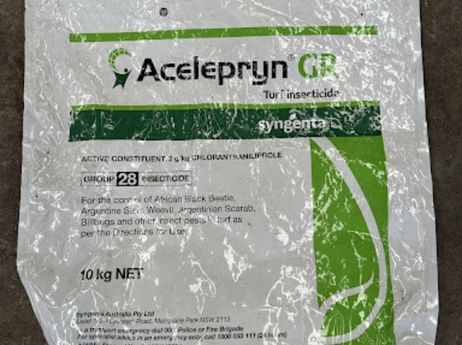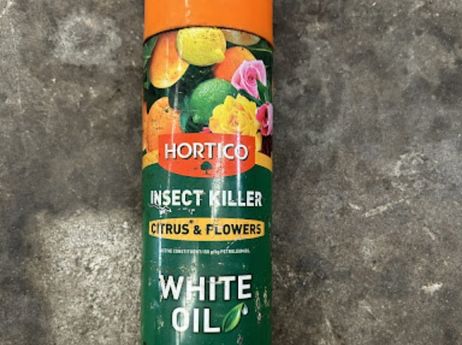Lawn Grubs And Pests Because Of Spring
Lawns are an integral part of our gardens. Across the board they take up 1 third of garden maintenance so it is important to maintain the lawns health and general appeal. These warmer spring days bring more of the seasonal suspects that are common in our gardens at this time of year.
Insects that have been hibernating or nesting awaken in the spring with an appetite. If these pests aren’t controlled, they can swiftly ruin the appearance of lawns by leaving dead spots and discolourations and sometimes irreversible damage.
Lawn Grubs
In Australia, lawn grubs are a typical lawn pest. Various lawn grubs are also known as surface-dwelling caterpillars, cockchafers, and armyworms. These creatures are attracted to the leaves and root systems of the lawn, depending on the species.
During the spring & summer, lawn grubs are most common (i.e. September through to March). Your beautiful, green grass is most vulnerable at this time since it is strong, fertile, and packed with nutrients. Lawn grubs eventually mature into moths and beetles (a regrettable and never-ending cycle!).
How Can I Tell Whether I Have Lawn Grubs?
Frequently, sporadic brown or dead patches of grass point to the presence of grubs. As lawn grubs dine on the roots of a healthy lawn the signs should be clear. Another sign which might not be as clear is an increase in wildlife surrounding your lawn. Birds and rodents feed on lawn grubs especially if you notice a few extra magpies lingering around your lawn, now you know why.
How to Prevent Lawn Grubs
Frequently applying insecticides will keep your lawn productive and healthy. Lawn grubs, for instance, can be effectively treated with multiple applications of the appropriate insecticide. In order to protect your turf from unintended repercussions, it’s crucial to follow the manufacturer’s recommendations when applying careful

Mole Crickets
A brown, elongated insect pest with wings, a hard, shiny head, and a body up to 50mm long is known as a “mole cricket.” They have muscular hind legs that are utilised for clearing loose soil during burrowing and robust front legs with sharp claws for digging. Beginning in early November and continuing through the warmer months, female mole crickets lay their eggs whilst the mature male Mole Cricket passes away following mating, and the females pass away following egg-laying.
Mole crickets enjoy the habitat of moist soil and long grass and they are most common in your lawn from mid to late spring to the end of summer. During the winter months they will dig themselves small burrows to hibernate in until things start to warm up, once they do they’ll reappear to start to feed on the grass and root systems in your lawn.
How to Prevent Mole Crickets
Mole Crickets are most susceptible to pesticides when they’re at the nymph stage before they’ve had the chance to develop a thicker exoskeleton and burrow deeper into the soil. Apply spray, granules or baits when overnight temperatures are above 16 degrees and irrigate the soil as this helps the pesticide penetrate into the soil and encourages the crickets to move up towards the surface.
If you prefer a more natural method, there’s a non-toxic foliar spray or soil drench made from Neem oil extract which kills and repels Mole Crickets. Used properly it is safe for humans and does not target beneficial insects such as bees, butterflies etc
Cutworms
The larvae of this species are known as cutworms because they normally pull the leaves off your lawn into a burrow before eating them. Cutworm is a pest that resembles a caterpillar; it often has stripes and comes in a few different colours and sizes. The most common are about 40mm long with a dark grey/brown & green tinge.
This is a group of species belonging to the moth family Noctuidae. The larvae are indiscriminate feeders, causing damage to almost all plants, crops and even small trees. Larger larvae may completely cut through stalks, which can cause plants to wilt and die.
How to Control Cutworms?
There are a few effective ways of removing cutworms from your gardens. Usually, a pesticide will always do the job after a few applications but keeping in mind caterpillars are at the bottom of the food chain, there are a lot of existing biological control agents which work in our favour such as predatory beetles and birds. An appropriate pesticide containing the Common Active Ingredient Chlorantraniliprole for long-term residual control is needed to control cutworms. Or if you would prefer to use a nonchemical option, a few applications of White Oil mixed with a little bit of water should do the trick.
There are other types of pests that are still not mentioned and if you need help on your lawn and other landscape services, fill up the form below so one of our specialists can help you.
We Accept






